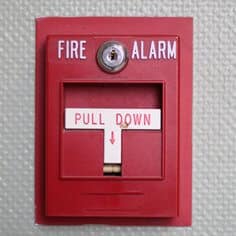Facilities Management Tips: Emergency and Disaster Drills Assisted by Software
By David Spence• 2 mins read•February 14, 2014

Floor Plan Software Helps Facility Managers to Run Emergency Drills
Identifying the Emergency Drill That the FM Team Will Run
The type of drill will depend on the emergency you choose. What is more likely to occur at your facility? A shutdown due to inclement weather? A fire? A chemical spill? Choose the most realistic danger and plan the drill around that. (This is not to say, however, that you shouldn’t think about other less likely but still important risk factors. These less likely emergencies can still be addressed using tabletop simulations.)
Assembling an Emergency Committee (Facility Teams, HR and Security)
Who will the key players be when responding to an emergency? These individuals will be responsible for organizing people, resources and information in the face of disaster. They’ll also be in positions of authority, with enough knowledge to protect department assets and contribute productively to emergency planning discussions. The specific makeup of such a committee may depend on the scope and nature of your company, but at the very least, the facilities team, security and HR should be involved.
How OfficeSpace Software Can Help the Emergency Committee
Visual floorplan software can help emergency teams plan evacuation routes and identify the location of emergency equipment. With OfficeSpace’s easy to print out, zoomable floor plans, evacuation routes can be planned, designed and then distributed to staff. Other members of the organization are able to view where the members of the emergency teams sit in the office so they know who sits where and who will be in charge in case of an emergency.
Talking About Roles and Expectations
Once you’ve assembled your emergency crew, hold a meeting where you discuss what’s required of each person. Explain their duties relating to their individual departments and to the emergency crew overall. If they have any concerns about the plan, this will be a good time to iron out the details, including what date you run the drill. Any days where certain departments expect to be saddled with big projects will probably not be the ideal day for practicing.
Using a Drill Observer
During the time of the actual drill, you may be too busy presiding over the activity to see how smoothly everything goes. To address this, consider having a drill observer or a team of evaluators watch the proceedings. Give them a checklist of what to watch for and have them take note of any inefficiencies. Their assessment will be valuable when you’re reviewing the drill later on.
Running the Drill
Once you have all the players in place, it’s time to set them in motion. Review with the emergency crew what your plan is, and make sure they know the time, date and details of the drill. Send a company-wide email with this information and instructions for proper protocol, too. (To ensure that the staff is well aware of the drill, you may want to send an initial email well ahead of the drill date, and another one again closer to time.) Then, run the drill, and see where it goes.
Doing a Post-Drill Evaluation
How did the drill go? How did everyone perform? It’s likely that some parts of the plan need improvement. Meet with your drill observer if you decided to use one, and do a follow-up with the emergency crew. Make a list of the problems encountered and use this information to restructure your plan accordingly.
For smoother emergency drill planning and for better prepardness in case of an actual emergency, contact OfficeSpace today to set up a free demo.



